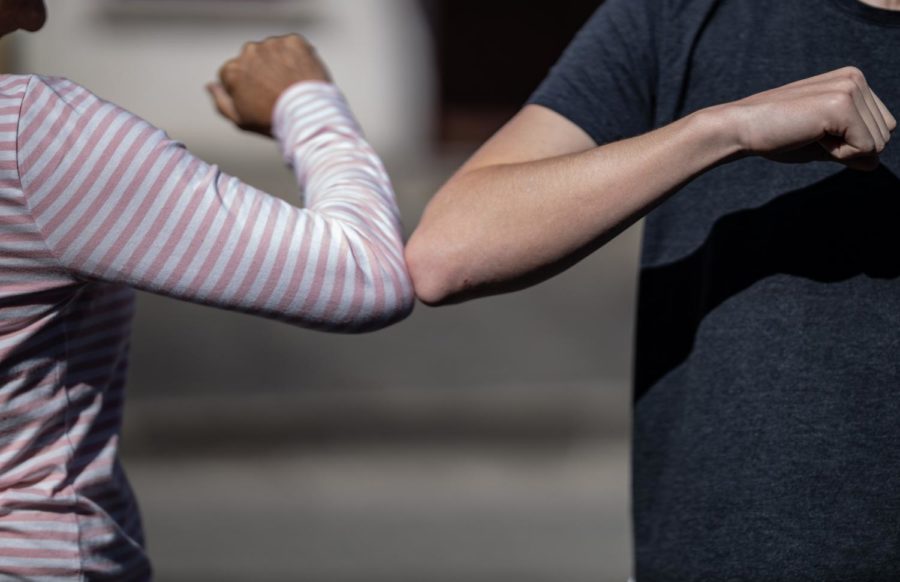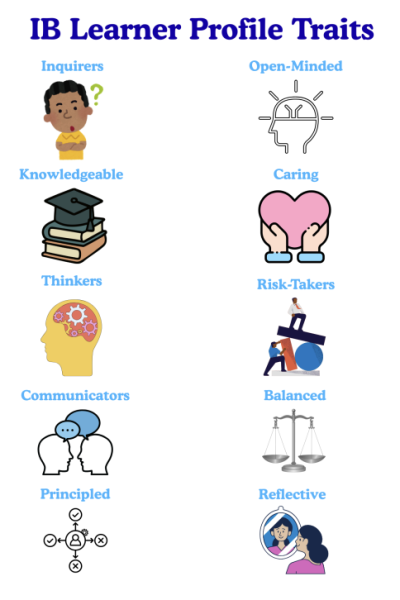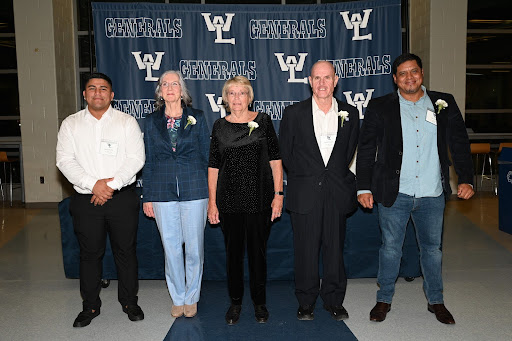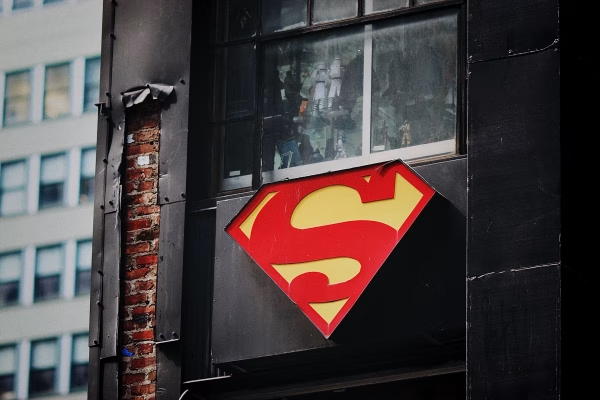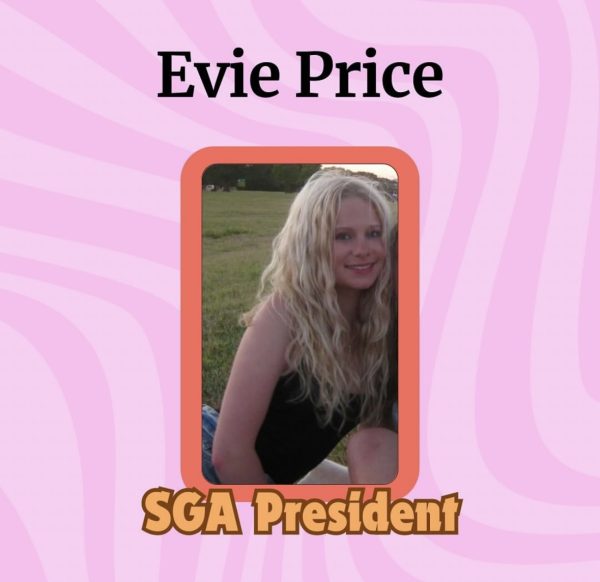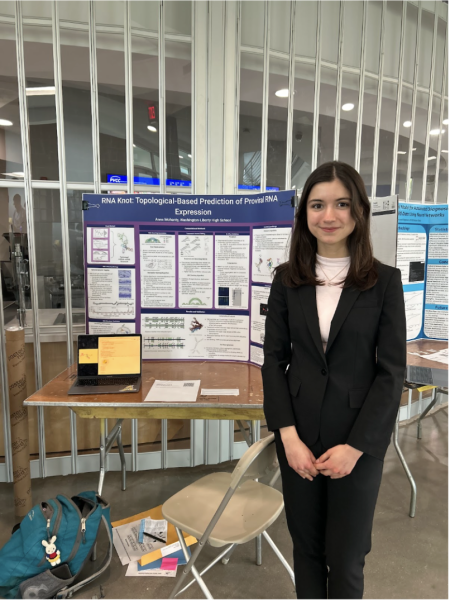Lessons from the lockdown
Reflecting on growth and change two years after COVID-19 changed the world
Two years ago, in early 2020, “COVID-19” was not yet a household name. Students went to school, played sports, saw friends. Teachers and administrators did as well; it was standard practice and no one thought twice about it. In March, however, lives changed forever as schools and businesses shut down. Now, two years later, the world has grappled with continuous ups and downs. From asynchronous to virtual to hybrid to in-person learning, these are challenges no one expected to face. As a result, people have changed in ways they never imagined.
Nicholas Coughlin–The mental toll of the pandemic and taking advantage of in-person experiences
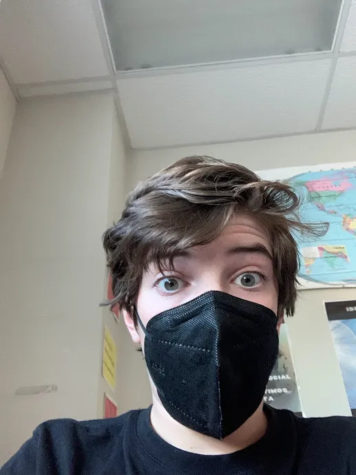
As the world moved through and tried to adjust to this new life, Arlington Public Schools (APS) was on its own journey. After being completely asynchronous from mid-March through June of 2020, the 2020-2021 school year marked the beginning of synchronous virtual learning. For many students, including freshman Nicholas Coughlin, this was a challenging time.
“I struggle with anxiety,” Coughlin said. “School has never been the easiest thing. I was doing pretty well in sixth grade and the start of seventh grade, but I could not function properly in online school.”
What made both the early stages of the pandemic and online school most difficult for Coughlin was the isolation.
“[For] eight months, in person, I saw the same 20 people,” Coughlin said. “It was my family and my close friends, and I enjoyed being with them, but everybody gets tired of each other, it’s exhausting…I got so bored.”
When APS started bringing students in twice a week, Coughlin jumped at the opportunity, finishing middle school through the hybrid learning model. Starting as a freshman in late August 2021, he took full advantage of being in person by joining student government as well as seven school clubs.
“I really love being in person,” Coughlin said. “[High school is] a big upgrade from middle school, a lot of homework, but I’m learning. I like most of my teachers, I’m learning a lot and I’m enjoying the high school experience.”
Not long after escaping the solitude of virtual school, the Omicron variant arrived. Coughlin was thrust back into isolation when he contracted the virus over Christmas, and the rest of his family stayed negative. While his symptoms were mild, this meant that Coughlin was isolated from his family as well as the rest of the world.
“It wasn’t fun,” Coughlin said. “My family had to cancel our trip to the Grand Canyon, I pretty much had to miss Christmas, which I celebrate, and I missed a lot of family time to basically sit in my room and [be] bored.”
The experiences of the last two years have encouraged Coughlin to prioritize both in-person experiences and his mental well being.
“I’m definitely learning about my mental capacities,” Coughlin said. “I think I’ll eventually recover but, as of now, in school, when I’m working with my teachers and my friends, I can ask my teachers questions… I’m learning and I enjoy it. But, at home, I still feel the isolation [and] it’s really hard to work. I need to set limits, I need to choose classes that really fit me and not just choose classes to impress colleges.”
Maya Kent–Finding a routine and relying on yourself
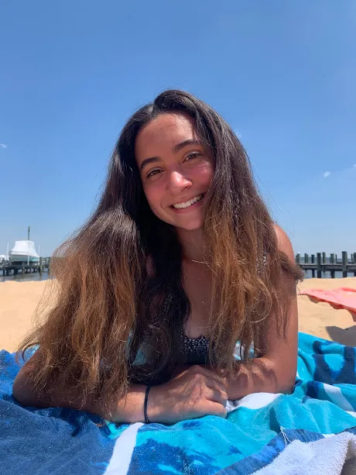
For sophomore Maya Kent, the past two years have led to the discovery of several new hobbies. After starting high school virtually, Kent joined the cross country team in early spring of 2021.
“[At] that point in time, cross country [and] track, that was my only ‘normal’ thing I was doing,” Kent said. “That was kind of like a little family…throughout everything that was happening in the world, that was the only thing that was normal. It definitely made me appreciate the team a lot more.”
The pandemic has pushed Kent to find opportunities to be independent. She finds this through running, as well as through other hobbies such as reading.
“Running is such a good thing because you can do it with a team and you can do it on your own, it doesn’t really depend on anyone,” Kent said.
When it comes to school, Kent was pleased to return full-time in person. After spending freshman year almost entirely online, she has found the 2021-2022 school year feels like her first year of high school.
“Coming out of freshman year, I was like, ‘I really hope that isn’t what sophomore year is going to be like,’” Kent said. “[With] hybrid and online, it’s such a different routine. You wake up early, you wake up later…It’s not consistent.”
Consistency is something that Kent values, but since March 2020 she has had to create that for herself instead of relying on school or society to do it for her.
“I’ve definitely learned about finding things that I enjoy without depending on any other people,” Kent said. “It’s so unpredictable, everything that has happened. I’ve learned to find things that can be consistent.”
Caitlin Miller–Building confidence as a result of the pandemic
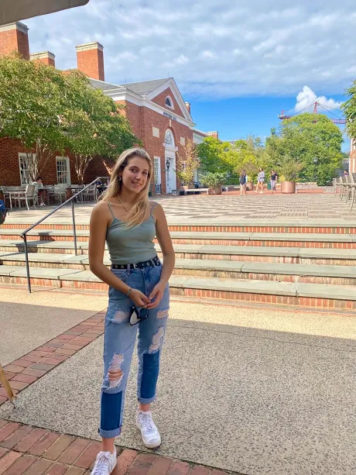
After completing the first year and a half of high school pre-COVID-19, senior Caitlin Miller spent much of sophomore and junior year online before returning for hybrid learning.
“I did [hybrid] so I could leave my house more often and see more people,” Miller said. “Although it was nice to see some of my friends again, overall the experience was boring and none of the fun parts of high school were included in hybrid learning.”
High school is, for many, a transitional period, leading to significant change both individually and socially. Miller experienced this growth amidst a pandemic.
“I’ve definitely become more confident with myself and different aspects of my life,” Miller said. “I’ve become more outgoing than I was pre-pandemic.”
To supplement the mostly virtual school year, Miller continued to play varsity basketball and softball for the school. Clubs and out of school activities also provided means of communication with the outside world.
“When sports started back up again, I put myself out there and worked to build friendships with my teammates, because I realized I didn’t really do that before the pandemic,” Miller said. “When W-L softball started up, I met a lot of new people who I really liked and I always felt confident around them.”
Despite her high school experience being turned upside down, Miller has continued to see the bright side, whether it was more time to do homework during the virtual day or simply appreciating the ability to finish high school in person.
“The pandemic taught me that anything is possible and that there are ways to find good things from bad things,” Miller said.
Mr. Carey–The logistical side of the pandemic
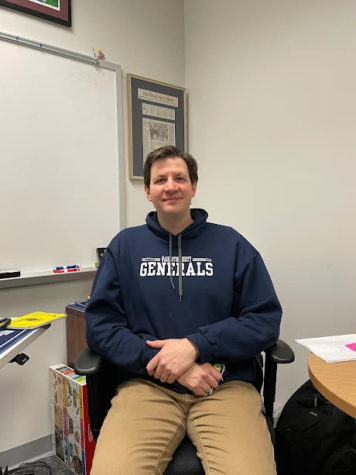
For Assistant Principal Mr. Miles Carey, the past two years have been full of logistics. Shortly after the pandemic began, the school was busy ordering webcams, microphones and beginning to provide wifi for families.
“I think the biggest priorities we had were trying to make sure every student could access their education,” Mr. Carey said. “I know a lot of students just kept the cameras off, but we tried the best we could to give them that connection to another human while being isolated. For staff, [the priority] was making sure that they had what they needed to pivot to doing everything virtually.”
Activities and processes that required little more than a second thought pre-pandemic now required giant spreadsheets and long debates. One example was textbook distribution, a project which Mr. Carey took the lead on.
“The isolation, the stress, and all that from the pandemic, we all felt too,” Mr. Carey said. “I think that was the biggest challenge, everyone trying to deal with the pandemic in their own way. Whether it was childcare, whether it was a family member who was sick or things like that, trying to deal with all that and then to come back and do this job with a lot of extra duties such as figuring out textbooks and figuring out how to get wifi to kids and contact tracing.”
With the start of hybrid, a new load of challenges were presented to teachers and administrators. While they had been vaccinated, students and their families had not been.
“I think the teachers, even vaccinated, were still scared of being in a building all day surrounded by a potential virus and taking it home to our families,” Mr. Carey said. “I remember those first few months I would get home, shower, and spray my clothes off every time I came home just because my partner, who’s a little bit compromised, wasn’t going to get a vaccine for another month or two.”
Now that vaccines are more widely available, Mr. Carey has been able to appreciate having students back in the building full time.
“[Almost] everybody in this building works here because we enjoy working with students,” Mr. Carey said. “Being isolated takes out most of the joy of this job and leaves just the stress. It’s been nice to get back [to] working with kids.”
While much of the joy has returned, the recent uptick in cases has led to more logistical challenges and stress.
“There’s more absences than we have substitutes in the county, a lot of teachers have to give up their planning [period] to now go cover another class,” Mr. Carey said. “Monday [January] 10 was right after we had that snow week, we had 27 teachers out and only 15 subs.”
While the pandemic has led to challenges both in school and on a personal level, Mr. Carey hopes to see some long term benefits.
“One thing I have noticed that I think is good is that a lot of people have a better understanding of what folks with depression or anxiety go through on a daily basis,” Mr. Carey said. “ They’ve now been isolated for a year and they understand what that feeling is even if it’s not a chemical imbalance or anything like that. They know that feeling of just day after day after day of feeling really bad and like it’s not going to get better… I think that’s one of the silver lining benefits, that people just hopefully are a little bit nicer to each other.”
Mr. Timothy Lynch–Career change as a result of the pandemic
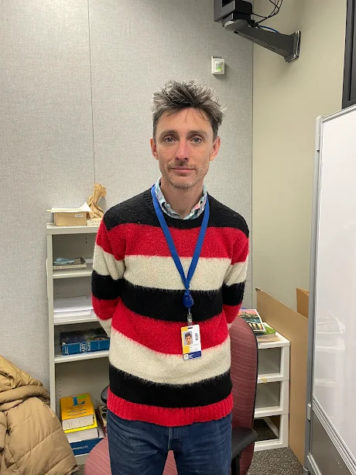
While the pandemic may have taken joy out of the profession for many, the opposite was true for ninth and tenth grade English teacher Mr. Timothy Lynch. When the pandemic began, Mr. Lynch worked in sales and marketing, specifically of high end crafts such as wine. As his stepdaughter began to participate in virtual preschool and, later, kindergarten, Mr. Lynch began to see potential for a career change.
“With the pandemic I found that I really enjoyed [teaching],” Mr. Lynch said. “I wanted to see what the kids were talking about, I wanted to try and hopefully guide them in ways that were beneficial to everybody so I thought, ‘let’s do it.’”
Beginning in August 2020, Mr. Lynch entered a two-semester masters program at the University of the District of Columbia (UDC) in order to become a teacher. Seeing as it was 2020, this meant that Mr. Lynch experienced virtual school as a student.
“I chose UDC primarily because it’s a brick and mortar institution. I was like ‘this isn’t going to last forever, maybe I’ll have to do a semester and then eventually I’ll go back, and eventually I’ll actually get to meet all of my professors and all the members of my cohort,’” Mr. Lynch said. “That never actually ended up happening. We went full virtual the entire time. So, when students are like ‘virtual learning was difficult,’ I fully understand you. I wasn’t always just on the [teaching] side [during virtual learning].”
Despite the pandemic drawing him to education, Mr. Lynch is passionate about in-person education.
“If someone [were] to tell me, anybody, student, administrator, education professional, that going to college online is the same as going to an actual college, physically and in person, I’m just going to say that’s false.” Mr. Lynch said. “That is absolutely 100 percent false.”
Now that he is teaching in person at the school, Mr. Lynch is sensitive to gaps in education that resulted from virtual learning. Even before virtual school, Mr. Lynch had a variety of education experiences, which included boarding school, Catholic school and even international schools.
“I’ve seen how a lot of different education is presented,” Mr. Lynch said. “I’ve seen how a lot of things work, I’ve seen where things fail, I’ve seen where things succeed. So, how can I use these advantages to help kids? Ultimately I want to make sure you guys are as well prepared as possible to enter into the next stage, whatever that may be.”
COVID-19 has proved just how much uncertainty there is, and showed how times have changed. Because of this, Mr. Lynch hopes to never stop learning and continues to adjust his plans to accomodate changing times.
“[A] major takeaway [from the pandemic] is no matter what you know, assume you actually don’t know,” Mr. Lynch said. “So many times I walk into this building and I’m like ‘This is going to be great, I know exactly what I’m doing,’ and I walk out of the building and I go ‘I might be the most foolish person that ever lived, what am I doing?’ I have to make sure that I’m always going to be flexible and [work] with people and [listen] to you guys and [try] to understand how best I can suit you. The goal is not to turn you guys into me, but the goal is how I can help you guys become better [versions of yourselves].”
Mrs. Carmen De la Cruz Scales–Returning to a new normal
For assistant principal Mrs. Carmen De la Cruz Scales, who currently oversees the 11th grade students as well as the World Languages and English Language departments, the return to school throughout year two of COVID-19 has been a welcome, although significant, change.
“It’s been a transition,” Mrs. De la Cruz Scales said. “It’s not the same as it used to be. It’s not just coming back, we’re coming back and now we have to transition students from being virtual to now being in person.”
One thing that Mrs. De la Cruz Scales noted as a challenge amongst the student population is masks.
“[Masks have been] one of the biggest changes for students,” Mrs. De la Cruz Scales said. “Now, they have to learn and adapt to wearing a new garment. Not only do they worry about ‘what am I wearing today’ [there’s also] ‘let me make sure that I don’t leave home without my protection.’”
In addition to masks, measures such as the Qualtrics analysis survey taken in the mornings help to ensure student safety. Mrs. De la Cruz Scales hopes that students can feel safe when coming to school, despite fear from those who have experienced first hand the effects of COVID-19.
“We have a great population of students,” Mrs. De la Cruz Scales said. “Our staff, they love the population and they want to be back.”
Moving forward, Mrs. De la Cruz Scales believes that lessons in technology taken from the virtual school year will change education permanently. One example is the expansion of the virtual school, which is now a separate entity for those who do not wish to return in person. Generally, she hopes people will maintain the sense of empathy garnered by many throughout the last two years.
“Don’t take things for granted,” Mrs. De la Cruz Scales said. “We were in school one day and the next day we [didn’t] know when we were coming back… People lost loved ones, their lives before the pandemic and after the pandemic will never be the same.”
The feeling of community is something Mrs. De la Cruz Scales hopes to maintain, even as the world moves past COVID-19.
“I’m so grateful to be here,” Mrs. De la Cruz Scales said. “I love the population, I love the school. During the time of the pandemic, we just pulled it together. Understanding that it hit some people really really hard but we’re one big family. We’re here, we’re here for the students.”
What did you think about this story? Do you have any suggestions for improvements or other articles that you would like to see? Please use the contact form to communicate with us! (Keep all information school-appropriate)
https://docs.google.com/forms/d/e/1FAIpQLSeRYRWwLLzvs2rqwHSGdr-DQRvxhUSx9UcaXypXxnvVuCqwyA/viewform


